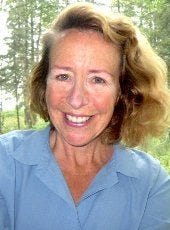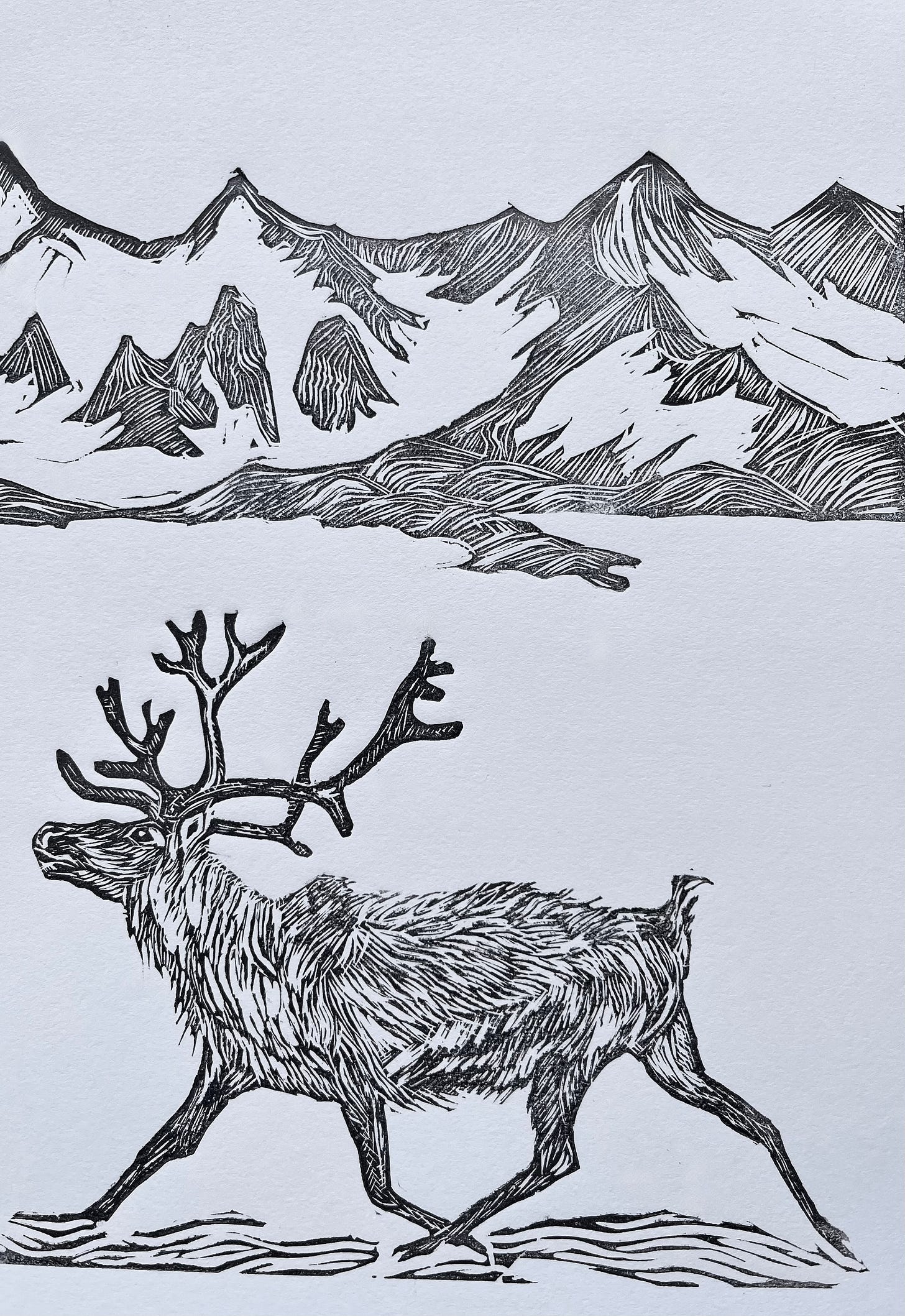Loving and Understanding Diverse Places
Interdisciplinary ecological historian and visual artist Nancy Langston
This bonus newsletter is a monthly feature for paid subscribers. These extras showcase edited interviews with someone whose work intersects in some way with this newsletter’s focus—place, history, writing. I hope you enjoy this one and those to come.
Introduction
Like all starting graduate students, I searched for exemplary work I could model my own after. The first influential book I read in grad school along those lines was Nancy Langston’s Forest Dreams, Forest Nightmares, an environmental history of the Blue Mountains of northeastern Oregon. I recommended countless times her second book, Where Land and Water Meet, to colleagues in interdisciplinary environmental programs that I was part of as a professor. She has published three other books, Toxic Bodies, Sustaining Lake Superior, and, most recently, Climate Ghosts. All of them show the strengths of interdisciplinary inquiry and the value of being engaged in the world beyond the academy. So, I’m delighted that this month’s interview is with Nancy. As you’ll read below, Nancy is a distinguished professor, excellent researcher, and innovative artist. I was particularly interested to learn how she has integrated this work. Read on!
Adam Sowards
Who are you, and how do you describe your work?
Nancy Langston
My name is Nancy Langston. I'm a distinguished professor of environmental history at Michigan Technological University. I'm an interdisciplinary writer and artist who tries to understand all the different entanglements of people, ecosystems, and animals.
My last couple books and the book I'm writing now work on animals and humans. (I mean non-human animals, of course, since we're animals too.) I'm a wildlife historian, but I trained as an ecologist, so I've always been in that weird in-between space.
Adam
I'm curious about some of this evolution. You've trained in evolution and moved toward history. Can you explain that initial shift to history?
Nancy
The slightly short version of the story was I realized that I love ecology, but I was more interested in historical ecology—the relations between human and ecological changes. Evolution is fundamentally a historical field—asking how and why things get to be the way they are as a way of understanding patterns and processes that shape the world around us.
I think environmental history is similar: like evolution, it’s way of understanding the past to better understand how we got to where we are. But it also suggests options for the kind of future we might want to create with the rest of the world around us.
As a historian, I'm very much an applied historian. I'm interested in environmental and ecological history insofar as it can help us understand how we got to where we are, and what do we want to do about it.
But the slightly longer version of the story was I was working in Zimbabwe on my PhD in the late 1980s. I was doing a standard conservation biology / evolutionary ecology study on a migratory bird, carmine bee eaters, that was nesting along the Zambezi River. In clarifying my PhD research questions, they became more and more and more specialized until suddenly I was studying the evolution of two tail feathers.
I was out in the bush netting masses of birds, working with field assistants who were all black African park service employees. They had been sent down by the park service to assist me. Things got really intense. There was a lot of rhino poaching going on at the time, across the border from Zambia, and the African guards I worked with had orders to shoot any other black person on sight, in order to stem poaching.
This was the era of what they used to call “fortress conservation,” which was to put bigger and bigger and bigger walls around a protected area. President Robert Mugabe was becoming a dictator, and Zimbabwe was becoming more violent. The world was blowing up around me, and I was not quite so stupid that I couldn't see that building bigger walls and getting bigger guns was not the long-term solution.
I came back to the states and couldn't get my permits to go back for the third year, in part because of growing political tensions. I walked into my advisor's office—Sievert Rohwer, amazing ecologist—I said, “I'm going to quit grad school. My heart isn't in this. I can't go back for a third year. I'm just going to drop out and write a book about the fires and forest history and the Forest Service in the Blue Mountains.” I’d fallen in love with that area.
He said, “Well, what do you want to do with that?”
“I want to be the next Wallace Stegner or something.”
“How do you think you might support yourself?”
“I don't know. I could get a lab job. I just want to write.”
He said, “Well, Nancy, what a great idea!”
It turned out he had dropped out of his PhD program to try and become a poet in Paris. He was a better ecologist than poet, but he was profoundly sympathetic.
He said, “Nancy, write the book you want to write”—which turned into Forest Dreams, Forest Nightmares—“and we'll figure out a way for you to earn a PhD for that project.”
It turned out they had a special individual PhD at University of Washington. Richard White had recently been recruited to Washington from Utah. Richard was an amazing mentor, and he said, “You have to meet Bill Cronon. There's this field called environmental history.” I stumbled into it. It seemed like a way I could write—not academic writing, but much more aimed at a broader public.
As a historian, I'm very much an applied historian. I'm interested in environmental and ecological history insofar as it can help us understand how we got to where we are, and what do we want to do about it.
Adam
Your first two books really influenced me as an environmental historian. (Forest Dreams, Forest Nightmares came out my first year of grad school, and I said, “I want to do that.”) Both books center on the Northwest. Then you moved to the Midwest. I once heard you say something like you missed the West until you discovered Lake Superior. I wonder if you could talk about what that means. Explain how those distinct landscapes—and if you want to, you can go back to the landscape of your childhood too—shape you and your work.
Nancy
I grew up on the East Coast, in outer suburbia. I loathed every millisecond of life in the Maryland suburbs. I used to love to play in Rock Creek Park and in the nature centers and just always wanted to be outside.
Keep reading with a 7-day free trial
Subscribe to Taking Bearings to keep reading this post and get 7 days of free access to the full post archives.





